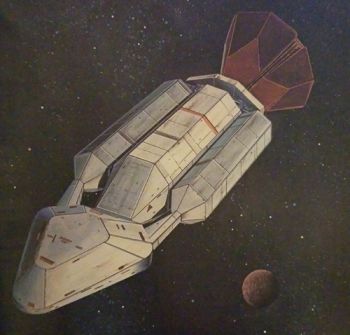Difference between revisions of "Cochrane class (21st Century) (FASA)"
m |
|||
| Line 73: | Line 73: | ||
|style="vertical-align:top;"| | |style="vertical-align:top;"| | ||
* Gravity: .4-1.0[[gravity|g]] | * Gravity: .4-1.0[[gravity|g]] | ||
| − | * Atmosphere: 20% [[oxygen|O<sub>2</sub>; 11% humidity | + | * Atmosphere: 20% [[oxygen|O<sub>2</sub>]]; 11% humidity |
|- | |- | ||
|class="HeaderRow ButtonLeft" style="width:25%;text-align:right;vertical-align:top;"|Sustenance Duration | |class="HeaderRow ButtonLeft" style="width:25%;text-align:right;vertical-align:top;"|Sustenance Duration | ||
| Line 155: | Line 155: | ||
|style="vertical-align:top;"| | |style="vertical-align:top;"| | ||
* Gravity: .4-1.0[[gravity|g]] | * Gravity: .4-1.0[[gravity|g]] | ||
| − | * Atmosphere: 20% [[oxygen|O<sub>2</sub>; 11% humidity | + | * Atmosphere: 20% [[oxygen|O<sub>2</sub>]]; 11% humidity |
|- | |- | ||
|class="HeaderRow ButtonLeft" style="width:25%;text-align:right;vertical-align:top;"|Sustenance Duration | |class="HeaderRow ButtonLeft" style="width:25%;text-align:right;vertical-align:top;"|Sustenance Duration | ||
Revision as of 04:37, 30 April 2019

Earth's first warp capable ship, the Cochrane class entered service in 2066, and proved to be the remarkable craft its designers had hoped it would be. After several years of design, construction, and testing, the Cochrane class, named for the inventor of the warp drive engine, Zefram Cochrane, inaugurated a new era in space exploration. Inacessible interstellar spans became reasonable distances, as demonstrated by the U.N.S.S. Bonaventure's journey to Tau Ceti in 2072, nearly 12 light years away. The class used fusion engines to generate the warp field effect, and featured a detatchable life support section in case of a warp engine emergency.[1]
Cochrane class vessels
Specifications
| Length | 206m |
| Beam | 63.4m |
| Draught | 66.7m
|
| Mass | 19.4 million kg |
| Ship's Complement |
|
| Navigation | Warp Celestial Guidance |
| Communication | Laser Radiotelemetry |
| Computer | Intermediate Independent Thought Memory Scan |
| Weapons | 2 forward lasers |
Performance
| Range (Standard) | 25 light years |
| Range (Maximum) | 40 light years |
| Velocity (Cruising) | Warp 2 (8c) |
| Velocity (Maximum) | Warp 2.5 (15.6c) |
| Typical Voyage Duration | 3.8 years (Sol-Tau Ceti) |
| Maximum Voyage Duration | 6 years |
| Life Support | |
| Sustenance Duration | 4.5 years at Standard Ship's Complement |
FASA Timeline

Earth's first warp capable ship, the Cochrane class entered service in 2058, and proved to be the remarkable craft its designers had hoped it would be. After nearly a decade of design, construction, and testing, the Cochrane class, named for the inventor of the warp drive engine, Zefram Cochrane, inaugurated a new era in space exploration. Inacessible interstellar spans became reasonable distances, as demonstrated by the U.N.S.S. Bonaventure's journey to Tau Ceti in 2061, nearly 12 light years away. The class used fusion engines to generate the warp field effect, and featured a detatchable life support section in case of a warp engine emergency.[1]
Cochrane class vessels
Specifications
| Length | 206m |
| Beam | 63.4m |
| Draught | 66.7m
|
| Mass | 19.4 million kg |
| Ship's Complement |
|
| Navigation | Warp Celestial Guidance |
| Communication | Laser Radiotelemetry |
| Computer | Intermediate Independent Thought Memory Scan |
| Weapons | 2 forward lasers |
Performance
| Range (Standard) | 25 light years |
| Range (Maximum) | 40 light years |
| Velocity (Cruising) | Warp 2 (8c) |
| Velocity (Maximum) | Warp 2.5 (15.6c) |
| Typical Voyage Duration | 3.8 years (Sol-Tau Ceti) |
| Maximum Voyage Duration | 6 years |
| Life Support | |
| Sustenance Duration | 4.5 years at Standard Ship's Complement |
References
- ↑ 1.0 1.1 Goldstein, Stan and Goldstein, Fred with Sternbach, Rick. Star Trek: Spaceflight Chronology. Pocket Books, 1980.